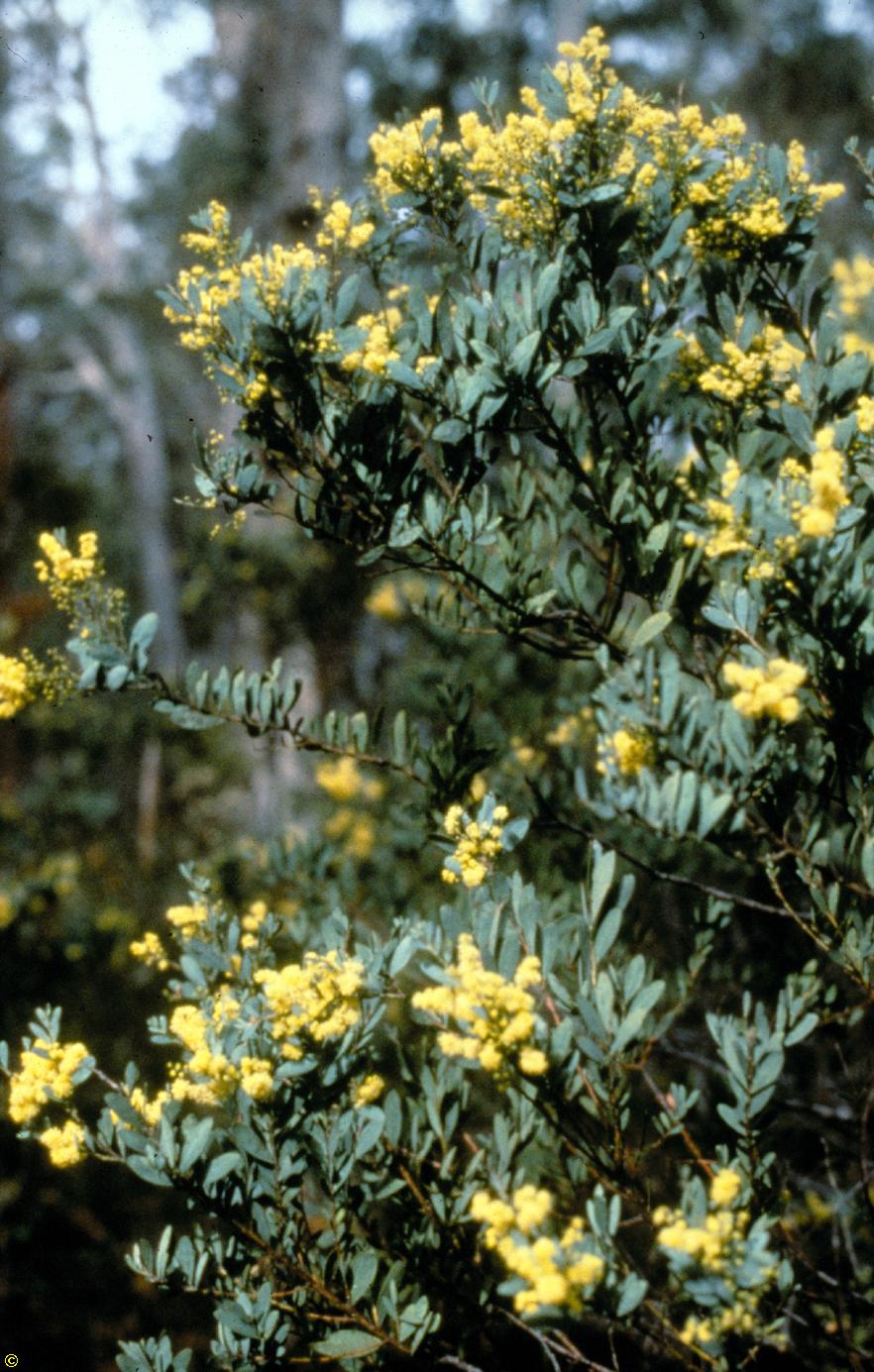Scientific Name: Acacia pataczekii Endemic Having a natural distribution confined to a particular geographic region
Common Name: wallys wattle
Family Classification (Clade): Eudicots
Family: Fabaceae
Threatened Species Status: Rare
Permit: It is an offence to collect, disturb, damage or destroy this species unless under permit.
Form Description: Shrub or small slender tree, young branches angular.
Height (m): 5 – 6
Flowers: Stalked small bright lemon-yellow globular heads of about 15 flowers in spikes of up to 30 heads.
Fruit: Seed pod – short, wide, brown, flat, purplish when young.
Municipality
Plant Communities
Habitat Notes
Local in the north-east at Tower Hill and Rose’s Tier.
Site Tolerance
Moist
Soil Tolerance
Fertile, Loam, Well-drained
General Notes
Named after the forester Wally Pataczek who first found it. Bird attracting. Resistant to Phytophthora cinnamomi. Susceptible to browsing by hares and rabbits.
Propagation Calendar
-
Flowering Month
Jan Feb Mar Apr May Jun Jul Aug Sep Oct Nov Dec -
Seed Collecting Month
Jan Feb Mar Apr May Jun Jul Aug Sep Oct Nov Dec -
Sowing Month
Jan Feb Mar Apr May Jun Jul Aug Sep Oct Nov Dec -
Cutting Month
Jan Feb Mar Apr May Jun Jul Aug Sep Oct Nov Dec
Propagation Method
Seed Information
Seed Collection
Most acacias are readily propagated by seed. Seeds brown/black and hard when ripe. Collect pods by hand and place in warm spot to open. Clean seed using sieves.
Seed Treatment Method
Hot Water Hot water is used to soften the hard seed case of some species. This replicates the weathering process. Pour hot (not boiling) water over the seeds and allow them to soak for 4-12 hours.
Seed Storage Life
Long
Germination Time
2-5 weeks
Cutting & Division Information
Cuttings are possible with “phyllode bearing” acacias, more so than with “feathery leaved” species.
